Macro photography is often casually referred to as “close-up”
photography. While it’s probably a safe bet that no one is going to be
shunned by their fellow photographers for tossing around such a loose
definition, the classical definition of macro photography is a
photograph in which the subject is magnified to life size or greater.
Typically, subjects of macro photography are very small, such as insects
or flowers; larger objects may also prove useful as macro photography
subjects if, for instance, you want to focus on some very specific,
smaller detail of the large object in question. Macro photography can be
incredibly fun and rewarding, but it can also be a challenge. While I
don’t profess to be any sort of macro wizard, I have acquired a certain
level of proficiency and am inspired to share my knowledge with those
who may be looking to take the plunge into macro photography.
Equipment matters — sort of
Whether you’re using a decent point-and-shoot or the latest full-frame flagship camera of your preferred maker, just about anyone can get a cool close-up shot of a blade of grass sporting beads of morning dew. In order to realize the full potential in such a shot (and make it a “true” macro), however, some specialized equipment is certain to be of great benefit. Assuming you are using a DSLR, your best bet is to obtain a dedicated macro lens. If your budget won’t allow for a new lens, you can try a set of extension tubes to use in conjunction with a lens you already own.
Get familiar with your subject
This is true no matter what kind of photography you are doing. If you were doing a photo shoot with a human subject, you’d want to have a good rapport with him or her, right? It makes for a better photo. The same principle applies to macro photography, especially when shooting insects. It helps to know their behavior; how do they respond to being approached by humans? Obviously if you are shooting flowers or sea shells, then you aren’t concerned with them scurrying away if you get too close. But it is still important to know as much as possible about the traits of whatever you’re shooting.
Patience, patience, patience
As in patience with your subject and patience with yourself. If you intend to photograph an insect, stalking said insect will more than likely prove unsuccessful. Instead of hunting down that elusive dragonfly, simply position yourself in an area that dragonflies frequent…and wait. If you remain vigilant, an opportunity will present itself eventually. But what if that perfect opportunity finally occurs and you blow it? Well, it happens. And this is where patience with yourself comes into play. Trust me when I say you’re going to take a lot of bad shots; a lot of poorly lit, out of focus, out of frame shots. Just keep trying. When you do nail that perfect shot you will be giddy with delight.
Let there be light
Excellent lighting is key for successful macro photography. We would all love to use natural light, but sometimes even the sun won’t get the job done. There are a few variables to account for in determining whether natural light will be enough: your subject, the time of day/intensity of the sunlight, the lens you are using. If you are outdoors shooting leaves in low morning light, for example, you might be okay, as the translucence of the leaves will allow you to backlight them. Backlighting could also work for flowers and butterflies. The lens itself could possibly make getting good light more difficult; simply, the closer you are to your subject, the more difficult it is to light it.
If it is a case of you and/or your lens blocking out the sun, this can be solved by using flash. Your camera’s built-in flash is not likely to be up to the task of providing adequate light for macro photography, so an external flash is in order. Getting that flash off the camera will provide even better results. If you think macro photography will become something you invest a lot of time in, you may even want to consider a ring flash. Given that a ring flash sits at the very end of your lens, you should be sure to diffuse the light.
Perfect focus
Nailing focus is perhaps the trickiest aspect of macro work. The best advice I can give here is to get comfortable with manual focus. Attempting to autofocus will do nothing but frustrate you. Before you try your hand at moving subjects, get in some good manual focusing practice on anything that won’t run or fly away from you. Once you’ve mustered the courage to test out your newly acquired skill on more animated lifeforms, you can further aid yourself by pre-focusing. This involves placing an object of similar size as your subject in an area within the camera’s field of view where you expect your subject to make an appearance. When the real thing finally shows up, you’ll be ready to shoot. Yes, there is some guess work involved with this method and, depending on what your subject is, may never find yourself needing to use it. But if you practice it, it’ll be there just in case.
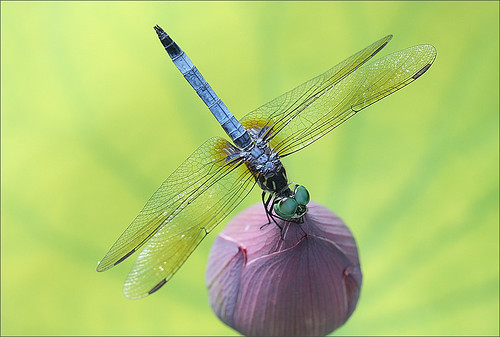
Close up of a dragonfly on a Lotus Flower Bud on green background – IMG_7149 by Bahman Farzad, on Flickr
Learning to see
Macro photography subjects are by no means limited to insects and flowers. In everyday life, we’re accustomed to seeing the “whole” of things. Start paying attention to the parts that make the whole and you will expand your vision for macro photography exponentially.
Practice, patience, and creativity will be the strongest weapons in your arsenal. So grab whatever gear you have and go have some fun!
Equipment matters — sort of
Whether you’re using a decent point-and-shoot or the latest full-frame flagship camera of your preferred maker, just about anyone can get a cool close-up shot of a blade of grass sporting beads of morning dew. In order to realize the full potential in such a shot (and make it a “true” macro), however, some specialized equipment is certain to be of great benefit. Assuming you are using a DSLR, your best bet is to obtain a dedicated macro lens. If your budget won’t allow for a new lens, you can try a set of extension tubes to use in conjunction with a lens you already own.
Get familiar with your subject
This is true no matter what kind of photography you are doing. If you were doing a photo shoot with a human subject, you’d want to have a good rapport with him or her, right? It makes for a better photo. The same principle applies to macro photography, especially when shooting insects. It helps to know their behavior; how do they respond to being approached by humans? Obviously if you are shooting flowers or sea shells, then you aren’t concerned with them scurrying away if you get too close. But it is still important to know as much as possible about the traits of whatever you’re shooting.
Patience, patience, patience
As in patience with your subject and patience with yourself. If you intend to photograph an insect, stalking said insect will more than likely prove unsuccessful. Instead of hunting down that elusive dragonfly, simply position yourself in an area that dragonflies frequent…and wait. If you remain vigilant, an opportunity will present itself eventually. But what if that perfect opportunity finally occurs and you blow it? Well, it happens. And this is where patience with yourself comes into play. Trust me when I say you’re going to take a lot of bad shots; a lot of poorly lit, out of focus, out of frame shots. Just keep trying. When you do nail that perfect shot you will be giddy with delight.
Let there be light
Excellent lighting is key for successful macro photography. We would all love to use natural light, but sometimes even the sun won’t get the job done. There are a few variables to account for in determining whether natural light will be enough: your subject, the time of day/intensity of the sunlight, the lens you are using. If you are outdoors shooting leaves in low morning light, for example, you might be okay, as the translucence of the leaves will allow you to backlight them. Backlighting could also work for flowers and butterflies. The lens itself could possibly make getting good light more difficult; simply, the closer you are to your subject, the more difficult it is to light it.
If it is a case of you and/or your lens blocking out the sun, this can be solved by using flash. Your camera’s built-in flash is not likely to be up to the task of providing adequate light for macro photography, so an external flash is in order. Getting that flash off the camera will provide even better results. If you think macro photography will become something you invest a lot of time in, you may even want to consider a ring flash. Given that a ring flash sits at the very end of your lens, you should be sure to diffuse the light.
Perfect focus
Nailing focus is perhaps the trickiest aspect of macro work. The best advice I can give here is to get comfortable with manual focus. Attempting to autofocus will do nothing but frustrate you. Before you try your hand at moving subjects, get in some good manual focusing practice on anything that won’t run or fly away from you. Once you’ve mustered the courage to test out your newly acquired skill on more animated lifeforms, you can further aid yourself by pre-focusing. This involves placing an object of similar size as your subject in an area within the camera’s field of view where you expect your subject to make an appearance. When the real thing finally shows up, you’ll be ready to shoot. Yes, there is some guess work involved with this method and, depending on what your subject is, may never find yourself needing to use it. But if you practice it, it’ll be there just in case.

Close up of a dragonfly on a Lotus Flower Bud on green background – IMG_7149 by Bahman Farzad, on Flickr
Macro photography subjects are by no means limited to insects and flowers. In everyday life, we’re accustomed to seeing the “whole” of things. Start paying attention to the parts that make the whole and you will expand your vision for macro photography exponentially.
Practice, patience, and creativity will be the strongest weapons in your arsenal. So grab whatever gear you have and go have some fun!
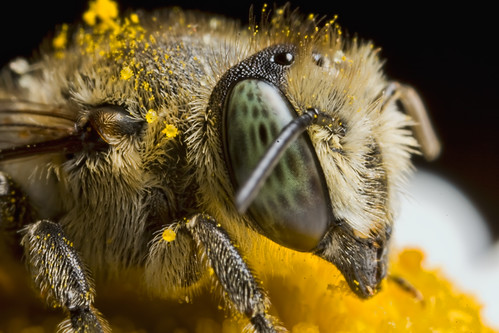
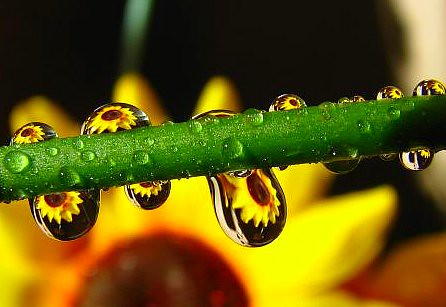
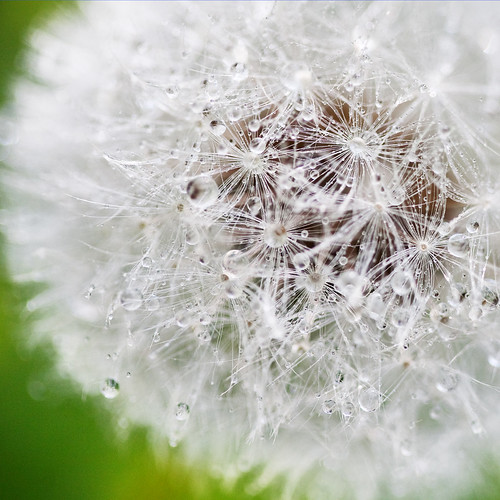


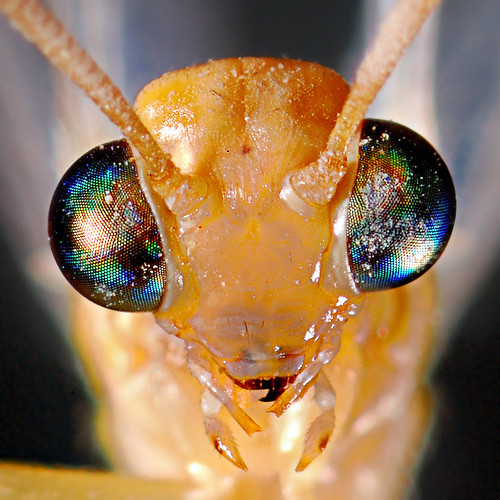

No comments:
Post a Comment